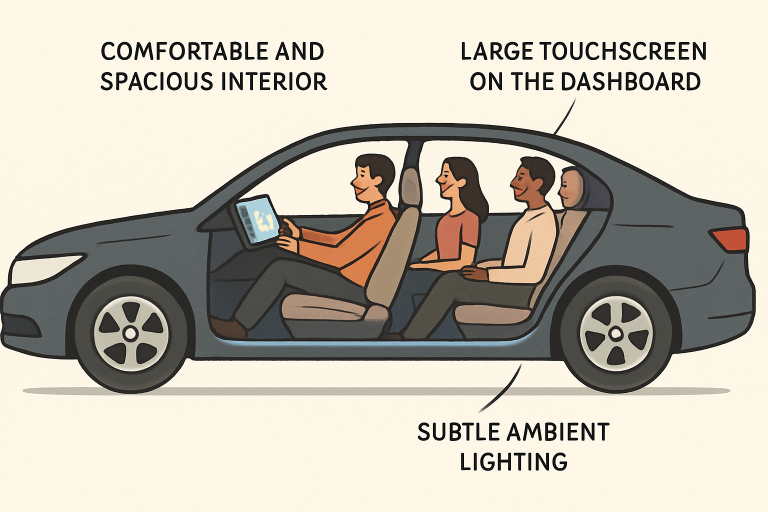How to Make Smart Choices When Buying New and Used Vehicles
Introduction
Owning a car is more than just a convenience—it’s often essential for work, family, and everyday responsibilities. With so many options available, navigating the car market can feel overwhelming without the proper guidance. Purchasing a vehicle is a significant financial decision for many consumers. Whether it’s a reliable family sedan or a rugged SUV, choosing the right car—especially when deciding between new and used cars—calls for thoughtful planning. Making informed choices helps you avoid expensive missteps and ensures your purchase aligns with your current needs and future plans. Exploring online reviews and browsing new and used vehicle inventories can offer valuable insights and a solid foundation for your car-buying journey.
Whether browsing dealership lots or researching online, making an informed choice can positively impact your lifestyle and finances for years. This comprehensive guide is designed to take the guesswork out of the process, ensuring you make smart, confident decisions along the way.
Research Before You Buy
The first step when considering which vehicle to purchase is thorough research. Identify what you need from your next vehicle: seating capacity, fuel efficiency, all-weather reliability, or advanced safety features? These requirements can quickly narrow down the field. Use respected online resources like Consumer Reports and J.D. Power for unbiased model ratings, reliability reports, and safety evaluations. Properly understanding your options now will help you avoid overspending or selecting a vehicle that doesn’t fit your lifestyle.
Inspect and Test Drive Thoroughly
Never underestimate the importance of both a visual inspection and a test drive. The test drive not only helps you assess comfort, handling, and visibility, but it can also bring to light issues you might otherwise miss, such as unusual noises or troubling vibrations. For used vehicles, ask for a vehicle history report from reputable sources like Carfax or AutoCheck—this will reveal vital information about prior accidents, title issues, or odometer discrepancies. Additionally, enlisting an independent mechanic to conduct a pre-purchase inspection is a wise move that may reveal hidden concerns.
Understand Financing Options
When it comes time to pay for your vehicle, shop for financing like you’d shop for the car itself. Check offers from banks, credit unions, and dealership finance departments—not only for lower interest rates but for better overall terms. Getting pre-approved for an auto loan gives you solid negotiating power and can help prevent pressure to accept less favorable in-house financing. Look beyond the monthly payment to the total loan cost: shorter terms and lower rates can save thousands over the life of your loan. For recent auto financing trends and tips, sites like NerdWallet can provide guidance.
Timing Your Purchase
The timing of your car purchase can significantly affect its price. Dealers typically offer the largest discounts and incentives near the end of the year as they try to clear inventory to meet quotas and make room for next year’s models. When salespeople aim to reach their targets, shopping at the end of the month or quarter can also result in better offers. According to industry experts, October through December is the best window for finding deals, with December being especially advantageous due to holiday promotions and end-of-year clearances.
Consider Certified Pre-Owned Vehicles
Certified Pre-Owned (CPO) cars bridge the gap between new and used vehicles, often representing the best of both worlds. CPO vehicles undergo rigorous multi-point inspections and typically come with manufacturer-backed warranties, providing additional peace of mind. While the price of a CPO is usually higher than that of a non-certified used vehicle, the potential cost savings on future repairs and the warranty protections can balance out the initial price difference.
Avoid Common Pitfalls
Common mistakes when purchasing vehicles include making impulse decisions, overlooking comparisons between dealerships, and failing to read the fine print on contracts. Always take your time, compare multiple options, and don’t be afraid to walk away from a deal that doesn’t feel right. Double-check all contract details, from financing terms to included warranties, ensuring that promises made during negotiations are reflected in writing. Remember, if something seems too good to be true, it probably is.
Leverage Online Resources
Online platforms are invaluable assets during car-buying. Price comparison sites and listing aggregators allow you to access a broad range of prices, read expert and user reviews, and even negotiate digitally before setting foot on a lot. These tools offer transparency and leverage to help you secure the best possible deal.
Finalize the Deal
Once you’ve found the right vehicle and negotiated a fair price, it’s time to finalize the transaction. Review every document carefully, confirming that agreed-upon items—including price, financing rate, and any dealer add-ons—are accurately included. Take your time, ask questions, and avoid being rushed into signing anything you don’t fully understand. Once complete, enjoy your new or new-to-you vehicle confidently, knowing you made a well-informed choice.
Smart preparation is the cornerstone of a successful car purchase. By following these strategic steps and leveraging modern resources, you can find a vehicle that fits your lifestyle, delivers long-term value, and brings peace of mind whenever you get behind the wheel.







